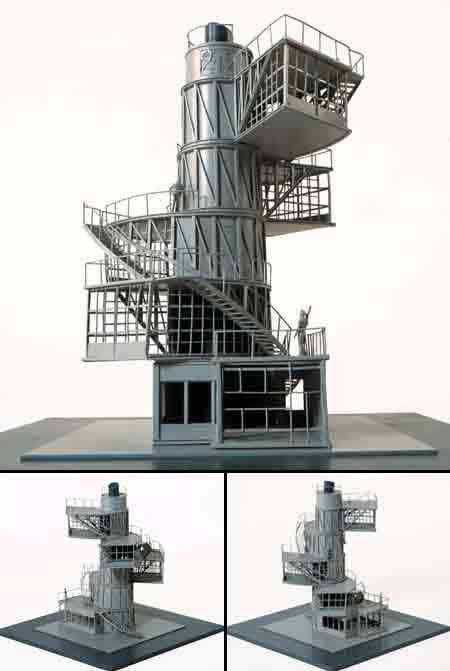 [Image: A “garden suburb” outside Moscow. Via Cabinet Magazine].
[Image: A “garden suburb” outside Moscow. Via Cabinet Magazine].
In the new issue of Cabinet, we read how, following the implementation of Stalin’s first Five-Year Plan – and in the wake of food rationing and extended work hours – “the shock-troops of Communism were edging perilously close to physical and mental exhaustion: what they needed was rest.”
Soviet authorities thus “announced a competition to design a garden suburb outside Moscow, where workers could be sent to recuperate from the strains of factory labor.”
Without getting into specifics – for that, be sure to pick up a copy of the magazine, issue #24 – one detail about the garden suburb that I particularly love, and that the article’s author specifically highlights, was a sort of colosseum of slumber. A dream academy.
Designed by Konstantin Melnikov, the building was a purpose-built structure referred to as the “Sonata of Sleep.”
 [Image: Konstantin Melnikov’s “Sonata of Sleep.” Via Cabinet Magazine].
[Image: Konstantin Melnikov’s “Sonata of Sleep.” Via Cabinet Magazine].
Specifically, we’re told, “the building consisted of two large dormitories either side of a central block,” and the dormitories each “had sloping floors.”
This would “obviate the need for pillows.”
Even more amazing – or is it absurd? – we read:
At either end of the long buildings were to be situated control booths, where technicians would command instruments to regulate the temperature, humidity, and air pressure, as well as to waft salubrious scents and “rarefied condensed air” through the halls. Nor would sound be left unorganized. Specialists working “according to scientific facts” would transmit from the control centre a range of sounds gauged to intensify the process of slumber. The rustle of leaves, the cooing of nightingales, or the soft murmur of waves would instantly relax the most overwrought veteran of the metropolis. Should these fail, the mechanized beds would then begin gently to rock until consciousness was lost.
While all this certainly sounds ambitious enough, apparently “Melnikov’s original impulse had been much more far-reaching.”
His original dream had been to create an Institute for Changing the Form of Man.
The whole article is awesome, frankly, encompassing the resurrection of the dead, a house designed by Melnikov in which residents felt as if they “were floating in thick golden air,” and further thoughts about how Melnikov “recombined industrial iconography into a series of spatial adventures,” most notably with a building that was “a delirium of gigantic stairways and roller bearings.”
 [Image: Konstantin Melnikov’s “Leningrad Pravda” tower, as modelled by R. Notrott].
[Image: Konstantin Melnikov’s “Leningrad Pravda” tower, as modelled by R. Notrott].
While I’m on the subject, though, don’t miss this page full of Melnikov’s other architectural projects, including the tower, pictured above, where “each floor should turn around the central core,” and this outrageous parking garage, to be constructed as a bridge in Paris, over the Seine. Note the bronze, Oscar-like statues holding up either end of the structure.
(Thanks to Leah Beeferman for emailing me the first two images, hot off the press from Cabinet).